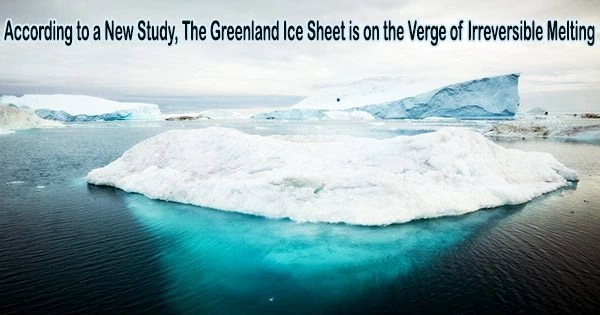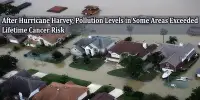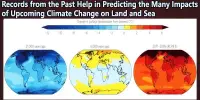The Greenland Ice Sheet is a vast body of ice covering most of the island of Greenland. It is the second largest ice sheet in the world after the Antarctic Ice Sheet and contains about 8% of the Earth’s freshwater. The Greenland Ice Sheet spans an area of 1.7 million square kilometers (660,200 square miles).
Although scientists are unsure of how soon the ice sheet could melt, if it completely disappeared, the global sea level would rise by around 7 meters (23 feet). Researchers can predict when that melt would happen by modeling tipping points, which are important thresholds when a system’s behavior irreversibly alters.
The Greenland Ice Sheet plays an important role in regulating global climate and sea level. It reflects sunlight back into space, helping to cool the planet, and as it melts, it contributes to sea level rise. In recent years, the ice sheet has been melting at an accelerated rate, which is primarily driven by warmer air and ocean temperatures.
Based in part on carbon emissions, a new study using simulations identified two tipping points for the Greenland Ice Sheet: releasing 1000 gigatons of carbon into the atmosphere will cause the southern portion of the ice sheet to melt; about 2500 gigatons of carbon means permanent loss of nearly the entire ice sheet.
Having emitted about 500 gigatons of carbon, we’re about halfway to the first tipping point.
“The first tipping point is not far from today’s climate conditions, so we’re in danger of crossing it,” said Dennis Höning, a climate scientist at the Potsdam Institute for Climate Impact Research who led the study. “Once we start sliding, we will fall off this cliff and cannot climb back up.”
As the ice sheet melts, its surface will be at ever-lower elevations, exposed to warmer air temperatures. Warmer air temperatures accelerate melt, making it drop and warm further. Global air temperatures have to remain elevated for hundreds of years or even longer for this feedback loop to become effective; a quick blip of 2 degrees Celsius (3.6 degrees Fahrenheit) wouldn’t trigger it.
Dennis Höning
The study was published in the journal Geophysical Research Letters.
Between 2003 and 2016, the Greenland Ice Sheet lost roughly 255 gigatons (billions of tons) of ice annually, indicating that it is already melting. The southernmost portion of the ice sheet has seen the most of the melt so far. How quickly the ice sheet melts and where it loses ice depend on a variety of factors, including air and sea temperature, ocean currents, precipitation, and others.
It is challenging to forecast how the ice sheet will react to various climate and carbon emissions scenarios due to the intricacy of how those factors interact as well as the lengthy periods scientists must take into account for melting an ice sheet of this magnitude.
Previous research identified global warming of between 1 degree to 3 degrees Celsius (1.8 to 5.4 degrees Fahrenheit) as the threshold beyond which the Greenland Ice Sheet will melt irreversibly.
Höning’s new work is the first to employ a complicated model of the entire Earth system, which includes all the major climate feedback processes, along with a model of ice sheet behavior, to more thoroughly analyze how the ice sheet’s reaction to climate could evolve over time.
They initially used models with constant temperatures to identify the ice sheet’s equilibrium states, or regions where ice gain and loss were equal. Then they ran a set of 20,000-year-long simulations with carbon emissions ranging from 0 to 4,000 gigatons of carbon.
From among those simulations, the researchers derived the 1,000-gigaton carbon tipping point for the melting of the southern portion of the ice sheet and the even more perilous 2,500-gigaton carbon tipping point for the disappearance of nearly the entire ice sheet.
“As the ice sheet melts, its surface will be at ever-lower elevations, exposed to warmer air temperatures. Warmer air temperatures accelerate melt, making it drop and warm further. Global air temperatures have to remain elevated for hundreds of years or even longer for this feedback loop to become effective; a quick blip of 2 degrees Celsius (3.6 degrees Fahrenheit) wouldn’t trigger it,” Höning said.
“But once the ice crosses the threshold, it would inevitably continue to melt. Even if atmospheric carbon dioxide were reduced to pre-industrial levels, it wouldn’t be enough to allow the ice sheet to regrow substantially.”
“We cannot continue carbon emissions at the same rate for much longer without risking crossing the tipping points,” Höning said. “Most of the ice sheet melting won’t occur in the next decade, but it won’t be too long before we will not be able to work against it anymore.”
















